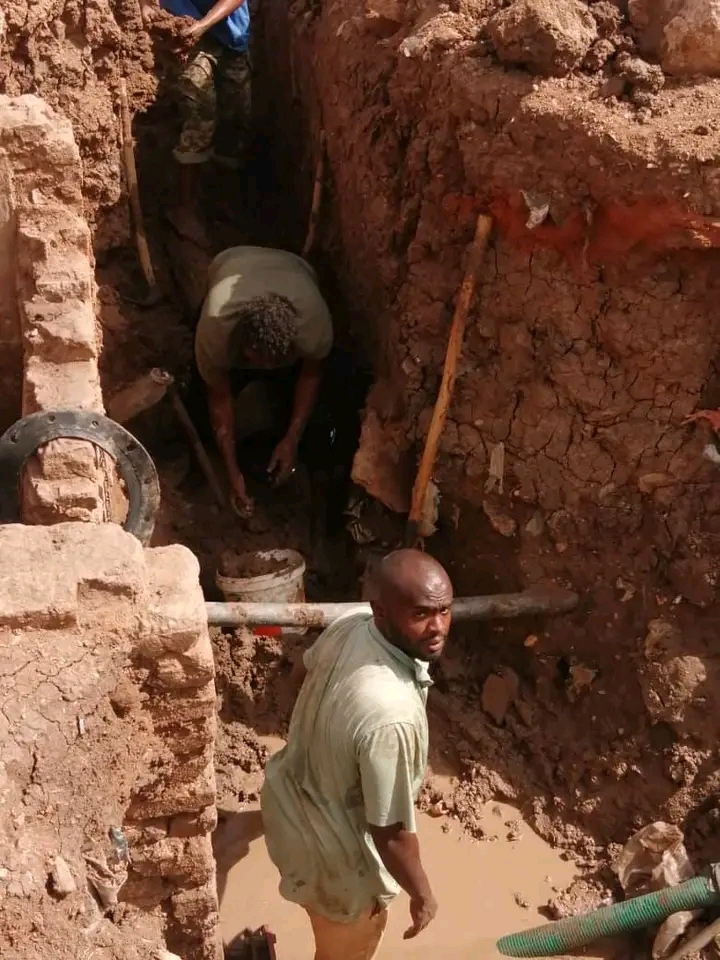After two years of devastating war, Khartoum State’s water production infrastructure has suffered extensive damage. Production plants, distribution lines, and power supply systems have been systematically destroyed, with copper cables and connections melted down for scrap in the so-called “copper trade” during the war, in addition to shelling exchanges between the army and the Rapid Support Forces (RSF).
Efforts Toward Solutions
Government authorities are making significant efforts to resolve the water crisis comprehensively. However, due to the scale of destruction, only 5–10% of the 13 main water plants across the state—Al-Mogran, Burri, Bahri, North Bahri (“the Eighties”), Al-Manara, Beit Al-Mal, Al-Saliha, Al-Shajara, Jebel Aulia, Bahri Industrial Area, Abu Saad, Al-Qamayir, and Al-Salam “52” in Dar Al-Salam, Omdurman—are currently operational.
Engineer Hisham Al-Amir, Director of the Drinking Water and Sanitation Department at the Federal Ministry of Irrigation, told Mashawir that the Bahri plant, which previously operated 15 pumps extracting 300,000 cubic meters per day from the Nile, is now running only one pump at 5% of capacity. Jebel Aulia, which once produced 68,000 cubic meters daily, has resumed operations at 25%, currently generating 17,000 cubic meters per day. Jebel Aulia remains the most productive after Al-Manara in Omdurman, thanks to the availability of public electricity in the area. It supplies southern Khartoum and supports the Al-Shajara plant, which produces less than 5,000 cubic meters daily.
Additionally, more than 370 solar- and diesel-powered wells are operational across the state, gradually easing the water crisis in some neighborhoods.
Partial Relief
Ibrahim Mubarak from Al-Sahafa, South Khartoum, reported that operating several wells in the area has eased the severe water shortages that persisted since the war began. In parts of Bahri city, such as Al-Halfaya, residents occasionally receive water through household pipelines, allowing them to store limited quantities before supply interruptions.
However, the Al-Wadi Al-Akhdar area has been without running water for over two years. Residents there and in nearby neighborhoods rely entirely on water distributed by charitable kitchens that purchase water tankers. According to Iqbal Omar, coordinator of one such kitchen, prices have soared: a 110-barrel tanker costs 300,000 SDG, a 55-barrel tanker 150,000 SDG, and a single barrel 3,000 SDG. Around 1,500 families depend on this service, a number rising daily as displaced people return home without restoring their livelihoods.
Persistent Challenges
Efforts are underway to restart the severely damaged Al-Mogran plant, which once produced 90,000 cubic meters daily for central Khartoum, Khartoum 2 and 3, Al-Ramila, Al-Qouz, Al-Hilla Al-Jadida, Al-Sajana, and parts of Al-Sahafa. Currently, water occasionally reaches nearby neighborhoods during test runs, but vast areas remain without supply.
The Soba plant, less damaged than others, now serves some districts in Soba and Al-Baqir. Yet, recurrent power outages hinder its operation, forcing authorities to use diesel generators. Fuel shortages have slashed its production from 100,000 to 10% of capacity. According to Al-Amir, Soba requires three barrels of diesel daily, a cost beyond the Water Authority’s means, so it runs only a few hours a day. Other plants, including Abu Saad, Al-Saliha, and Dar Al-Salam, face similar power-related constraints.
While organizations like UNICEF and the Red Cross have provided equipment and spare parts, daily operational costs remain unsustainable. Al-Amir noted that Al-Manara plant alone needs 20 gallons of fuel per hour, and despite new generators producing 3,000 watts of electricity, a lack of fuel keeps production minimal.
Beit Al-Mal plant in Omdurman is also being repaired to supply old Omdurman neighborhoods, though progress remains insufficient given current needs. Burri plant is completely destroyed, leaving its dependent areas reliant on Soba, where water shortages remain acute.
—
Would you like me to make a shorter, news-style version (250–300 words) of this report in English for quick publication?
